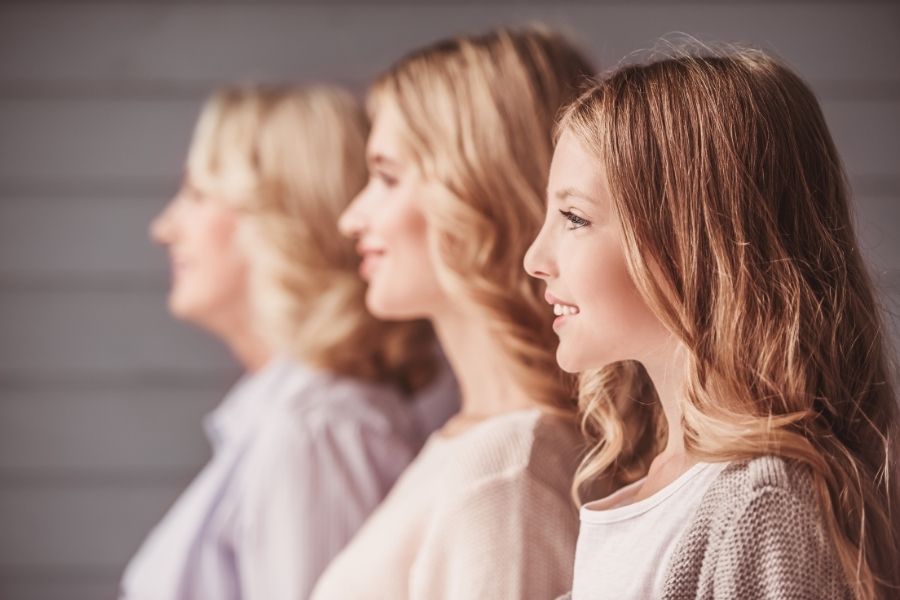Your skin tells your story to the world. Whether you’re a self-proclaimed skincare lover or don’t know what your skin type is, it’s never too late to get your glow on.
Our faces are something we look at every day. But how much do we understand about what’s happening below the surface? It’s time to uncover the story your skin is telling.
From the moment we’re born, our skin begins to age. As we grow, unique changes occur that require specific attention and care. In this blog, we’ll cover everything you need to know on how your skin ages, what changes to expect, and how to keep that healthy, radiant glow all your life.
But first, let’s learn more about the science behind your body’s largest organ.
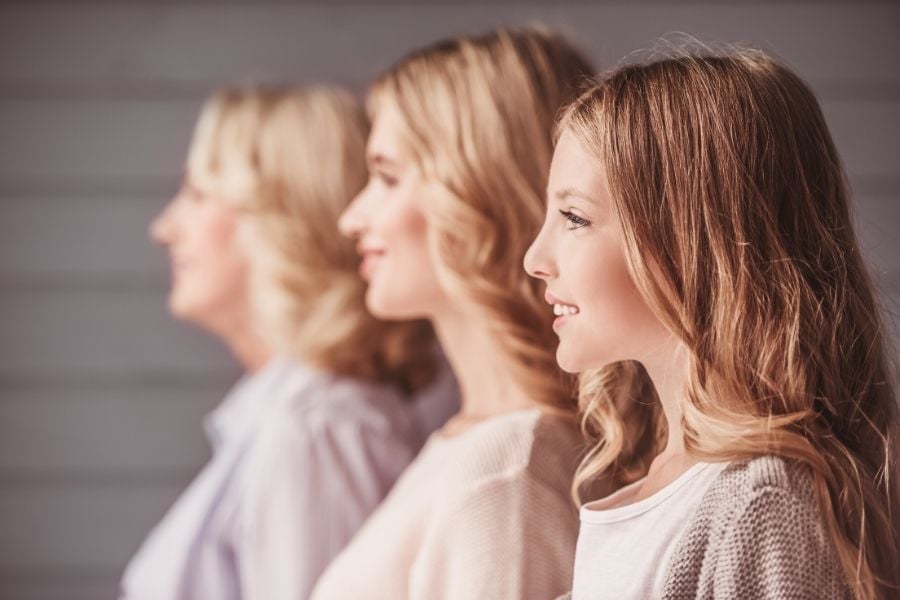
The Skin You’re In
You read that correctly–on average, your skin measures an impressive 22 square feet. That makes it the largest organ in your body. Our skin protects us from harsh external elements and helps us regulate body temperature.
Put simply, skin is comprised of three different layers: the epidermis, dermis, and hypodermis. If you snoozed your way through science class, don’t fret. Here’s a basic breakdown of each:
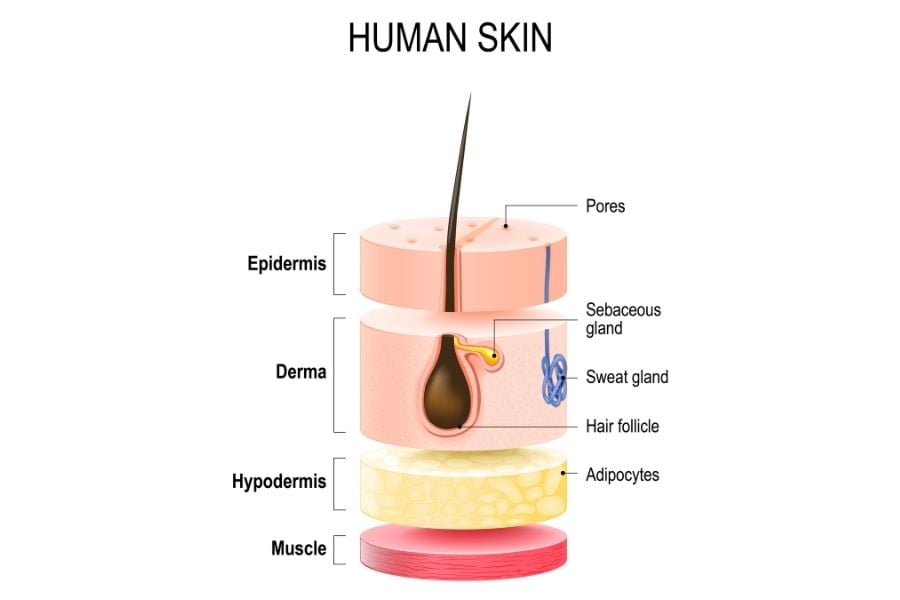
- The Epidermis is the top layer of the skin. This thin, tightly knit wall of cells allow your skin to be waterproof. The amount of melanin present is also what determines your skin colour.
- The Dermis is underneath the epidermis. It is a thicker layer comprised of collagen and elastin tissue. This is where you’ll find blood vessels, glands, hair follicles and nerves.
- The Hypodermis is the deepest layer of the skin. Made of fat and fibrous tissue, it’s responsible for insultation, fat storage and cushioning.
Together, these layers create the skin you’re in. When it comes to aging, each layer plays a role and undergoes different changes. There are two types of aging factors: intrinsic and extrinsic.
Intrinsic factors are natural progressions that develop slowly over time. During the aging process, the number of basal cells produced in your top layer of skin decreases. As a result, the epidermis becomes thinner. This decreases the amount of surface area where nutrients can pass between the dermis and epidermis.
Intrinsic aging also causes the skin to have less collagen and elastic fibers. This degeneration reduces the skin’s ability to retain water. The aging effects of intrinsic factors can be managed with the right routine and care.
Extrinsic factors come from external sources, which means preventative measures come more into play. The biggest known extrinsic factor is sun exposure.
In fact, as stated in Cell Transplantation: The Regenerative Medicine Journal, “Exposure to UV radiation is the primary factor of extrinsic skin aging; it accounts for about 80% of facial aging.”
The effects of UV exposure can range from wrinkles and lines to dark spots and discolouration. One of the best ways to prevent this is by protecting your skin with SPF.
For days you spend more time in the sun, especially during peak hours, try Vivier's Sheer Broad-Spectrum SPF 45.
By making sunscreen a habit, you’ll be doing wonders for your skin no matter what age you are. Let’s take a deeper look at what happens to each step of the way and what you can do about it.

Your Story Begins: Ages 0-19
You likely didn't think twice about your skin when you were a kid. But if you’re a parent, it’s never too early to enforce good habits.
Children’s skin can benefit from a basic routine that includes a gentle cleanser and a lightweight lotion. As they enter their “tweens”, a balanced diet will help their skin and body health overall.
During the teen years, however, the biggest change often comes from puberty. Hair follicles and sweat glands become present. Sebaceous glands also develop, which are responsible for producing oil.
When combined with the vast increase of sex hormones in the body, these sebaceous glands can kick into overdrive. The result? Acne.
According to the Postepy Dermatol Alergol, “Eruptions in the course of acne are usually located within the areas where sebaceous glands are abundant, particularly in the face area (nose, forehead, chin, cheeks), the back area (neck and interscapular region) and in the upper part of the chest.”
Teens are most likely to develop acne in these areas, but not all types are created equal. Closed comedones (whiteheads) and open comedones (blackheads) are some of the most common. These can be categorized as primary non-inflammatory changes.
Examples of secondary inflammatory changes include papules, pustules, nodules, abscesses, and fistulas. These forms are more severe and often more noticeable on the skin.
Acne can be a challenging skin issue to overcome, especially for young teens. It can take a toll on their self-esteem, but luckily, there are lots of ways to reduce breakouts.
Two acne-fighting, superstar ingredients you might be familiar with are benzoyl peroxide and salicylic acid. Vivier's Medicated Wash is an excellent choice because it’s formulated with 2% pharmaceutical grade (USP) Salicylic Acid.
Cleansing the skin daily with an acne-fighting product will help remove dirt, oil and bacteria. As a result, it can clear existing breakouts and prevent new acne pimples from forming.
After cleansing, teens can opt to use Vivier's Acne Treatment Lotion formulated with 5% Benzoyl Peroxide USP. It can be applied all over or used as a spot treatment for specific blemishes. In both cases, Vivier’s products can be safely used by children 12 years and older after testing for any irritation.

In Your 20’s...
Your 20’s are perhaps the most important phase in life to establish good skincare habits. Cleansing and moisturizing day and night are a great place to start. Keeping your skin hydrated will help avoid it from drying out and producing too much oil.
Some people only struggle with acne during their teen years. But for others, a blemished complexion can be something they struggle with during adulthood, too.
Finding and committing to a basic skincare routine will also keep acne at bay and set you up for a lifetime of healthier skin. Vivier's Acne Treatment System combines their two acne-fighting products to treat breakouts and give you noticeably better skin. They also have a variety of skincare programs that combine all their skincare must-haves in one handy kit.
Your 20’s are also an ideal time to get in the habit of using SPF. You likely won’t notice much sun damage or wrinkles this early on, but preventative measures will do your skin wonders in the long run.
This period of your skin’s health is an important one, so don’t skip out on the basic steps that will set you up for success.
In Your 30’s...
During the next decade of life, you might begin to see evidence of sun damage if you slacked on SPF in earlier years. Your skin might begin to appear duller and thinner.
Your skin also produces less collagen, elastin, and hyaluronic acid at this time. This means it can look less firm and supple. Hyaluronic acid is a plumping ingredient made naturally in the body, but a decrease in its production can cause dehydration.
These changes can also lead to noticeable wrinkles on your forehead, crow's feet, or laugh lines (nasolabial folds) - but every person is different. The appearance of fine lines and wrinkles can be managed with the right products.
A good place to start is with an antioxidant, like Vitamin C. It’s a powerhouse ingredient that can bump up your skin’s collagen levels and help treat any dullness that’s developed. Opt for the highest quality of Vitamin C (USP) available, like the one found in Vivier's pharmaceutical skincare.
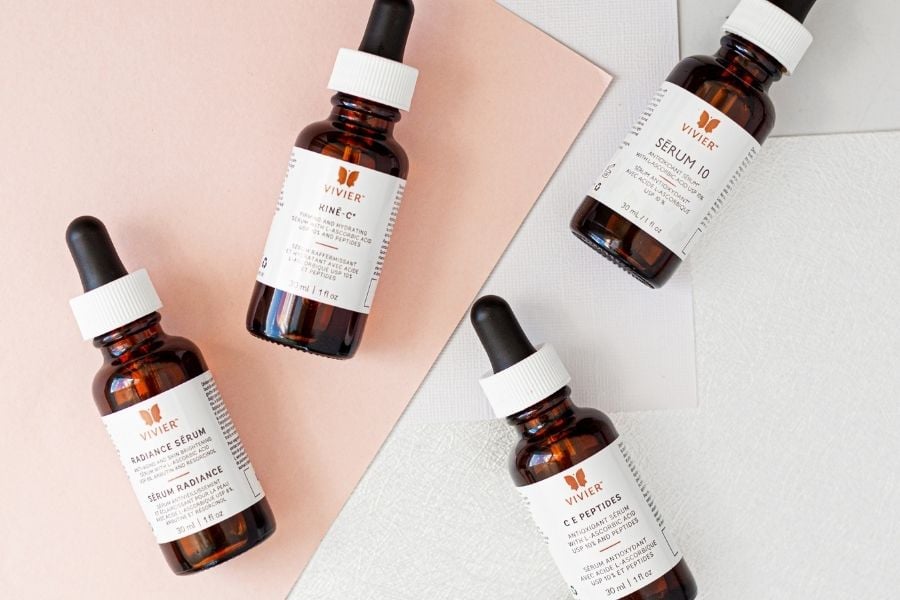
Another change that you can expect in your 30’s is your skin’s cell rejuvenation process slowing down. This naturally occurs with age. Skin cells renew every 14 days on average for children and teens, and every 24-30 days in your 20’s.
Once you hit your 30’s, your skin cell turnover rate slows down even more–between 28 and 35 days, to be exact. You can speed up the process and remove unwanted dead skin cells by adding a retinol in your routine.
Along with helping skin cells turn over, it allows new skin cells to begin forming. Retinol will also help with collagen production, so find one that works for your skin and stick to it. Start with a low percentage and work your way up to avoid irritation or dryness.
In Your 40’s...
As your skin continues to age, certain changes to your skin might become more noticeable. Lines, wrinkles, dull skin and less elasticity will likely be more apparent than they were in your 30’s.
A key change that takes place in the body at this age is a decrease in estrogen. This naturally occurs as a sign of perimenopause, which is the period of life before a woman reaches menopause.
Changing hormone levels can cause sagging skin, dryness, and even bone loss. When combined with reduced levels of collagen and elastin due to age, this can cause your face to look droopy or hollow.
Some people decide that their 40’s are an appropriate time to seek dermal fillers or Botox injectables. Dermal fillers are made with hyaluronic acid, and can be used to subtly restore lost volume or refine features lost with age.
Botox and Dysport injectables act as neuromodulators, which means they prevent the muscles in the face from moving (and therefore, prevent wrinkles). Some people as young as 20 may even seek preventative Botox to avoid wrinkles from forming to begin with.
Fillers and Botox can be safe and effective ways to achieve natural results while you age. But not everyone wishes to get them. Anti-aging skincare products are an effective choice for anyone in their 40’s.
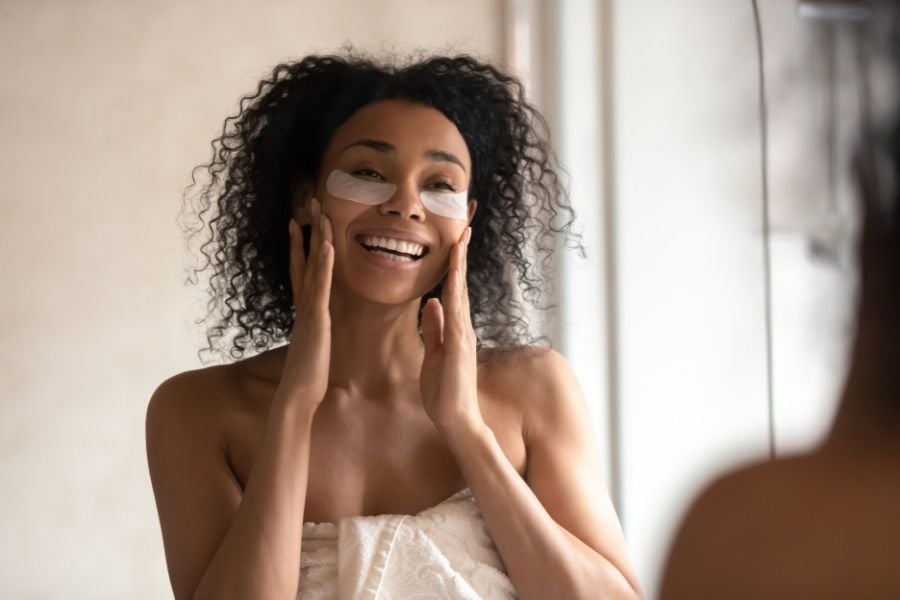
Consider upgrading your daily moisturizer to one with anti-aging ingredients specifically designed for older skin. Vivier's Daily Age-Defying Moisturizer will deliver the hydration your skin needs while also minimizing the appearance of lines and wrinkles.
You can also look for a night-time cream with anti-aging properties, like their Nightly Age-Defying Moisturizer. While you catch your zzz’s, it will help rebuild your skin’s strength and moisture barrier. In the morning, your skin will look smooth, moisturized, and have less visible signs of aging.
In Your 50’s...and Beyond!
During these years, the truth of your skincare history will reveal itself the most. If you slacked on SPF as you grew up, sun spots will likely become especially noticeable. The same applies to wrinkles, discoloration, and a loss of your skin’s “glow”. This is why healthy skin habits are essential throughout your life.
High-quality moisturizer and topical treatments, like Vitamin C and retinol, remain important at this age. You may also benefit from a product with Polyamine-DAB, a polyamine that makes our cells and collagen work more effectively. Vivier's GrenzCrine Serum will give your skin a healthy dose of Polyamine-DAB and Vitamin C to improve skin tone, texture and elasticity.
Your 50’s and beyond are the time where your eye skin changes significantly. Not only could you see droopy skin and dark bags, the skin around your eyes becomes even more thin and delicate with age. Try incorporating a good quality eye cream into your nighttime routine to add firmness and keep the skin protected.

Of course, past your 50’s and through the rest of the aging process it’s essential to stick to the basics. Preventative measures (like SPF), a balanced skincare routine of high-quality products, and a lifestyle rich in healthy foods and ample hydration are your keys to success.
When it comes to the health of your skin, it comes down to science. By going a level deeper and understanding what happens to your skin as you age, you can make educated choices about how to care for it.
Just because aging happens doesn’t mean you can’t love your skin each step of the way. Give it the proper care it needs, and you'll be on your way to having healthy skin for life.
One Life. Live Inspired.

